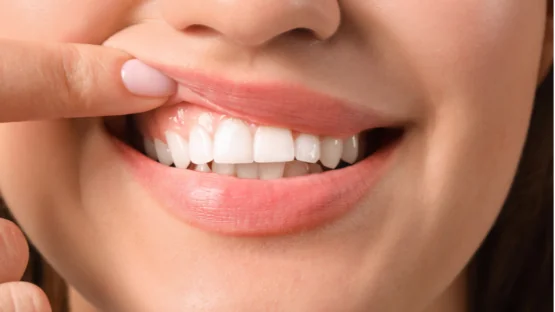A cellular study published in the Journal of Dental Sciences has shown that Vitamin D alleviates inflammaging related to the oxidative stress brought on by advanced glycation end-products (AGEs).
Diabetes and AGEs
Previous research has shown that the uncontrolled blood sugars associated with Type 2 diabetes attach themselves to other proteins and fats. This process, called glycation, leads to other disorders, including vascular and nervous system problems [1]. Type 2 diabetics have significantly more bloodstream AGEs than people without the disease [2], and these AGEs have been shown to increase oxidative stress [3] and inflammation [4].
It is unsurprising, then, that diabetes has been shown to be associated with the inflammatory gum disease peridontitis [5], which is the focus of this study. Other studies have found that diabetes increases oxidative stress specifically in gingival tissue, harming wound healing [6] and making inflammation worse [7]. As Vitamin D has been shown to be effective in ameliorating inflammation in other contexts [8], this led to a clear next step for researchers: finding out if it can help against gingival inflammation as well.
Substantial cellular effects
This research was conducted on a culture of human gingival fibroblasts (HGFs). The initial test, as is usual for these studies, was to determine toxicity; rather than showing any toxic effects, Vitamin D at one and ten nanomoles (nM) seemed to slightly encourage proliferation of these cells.
The second test was the key finding. HGFs maintain a baseline level of the inflammatory cytokines IL-6 and IL-8. Upon exposure to AGEs, this level spiked to nearly three times its baseline value. While the 0.1 nM dose of Vitamin D had scarcely any effect, the 1 nM and 10 nM doses reduced these cytokines almost exactly to their initial, baseline value as if the cells had never been exposed to AGEs at all.
These higher doses were also effective in reducing cellular senescence. While AGEs cause five times as many cells to express the senescence marker SA-β-gal as normal, exposure to 1 nM Vitamin D reduced this value to only double normal, and the 10 nM dose reduced it to only slightly higher than that of cells unexposed to AGEs. Blotting of the senescence marker p16 showed similar results.
Vitamin D also substantially decreased the expression of reactive oxygen species (ROS), a signifier of oxidative stress. Even the 0.1 nM dose of Vitamin D was shown to be somewhat effective in this regard. This was found to be due to its substantial upregulation of the crucial Nrf2/HO-1 antioxidant signaling pathway; cells that had Nrf2 silenced did not receive this effect.
Conclusion
This was a cellular study and was not performed in people or even an animal model. This research dovetails substantially with previous findings in this area, so its results, while profound, are not entirely unsurprising. As Vitamin D has been found to have positive, negative, and neutral effects on many other aspects of health, it remains to be determined whether its anti-inflammatory effects will be enough for Vitamin D supplements to be eventually recommended by doctors for this particular indication.
Literature
[1] Giacco, F., & Brownlee, M. (2010). Oxidative stress and diabetic complications. Circulation research, 107(9), 1058-1070.
[2] Akram, Z., Alqahtani, F., Alqahtani, M., Al‐Kheraif, A. A., & Javed, F. (2020). Levels of advanced glycation end products in gingival crevicular fluid of chronic periodontitis patients with and without type‐2 diabetes mellitus. Journal of Periodontology, 91(3), 396-402.
[3] Moldogazieva, N. T., Mokhosoev, I. M., Mel’nikova, T. I., Porozov, Y. B., & Terentiev, A. A. (2019). Oxidative stress and advanced lipoxidation and glycation end products (ALEs and AGEs) in aging and age-related diseases. Oxidative medicine and cellular longevity, 2019.
[4] Kishimoto, T. (1989). The biology of interleukin-6. Blood, 74(1), 1-10.
[5] Preshaw, P. M., Alba, A. L., Herrera, D., Jepsen, S., Konstantinidis, A., Makrilakis, K., & Taylor, R. (2012). Periodontitis and diabetes: a two-way relationship. Diabetologia, 55(1), 21-31.
[6] Kido, D., Mizutani, K., Takeda, K., Mikami, R., Matsuura, T., Iwasaki, K., & Izumi, Y. (2017). Impact of diabetes on gingival wound healing via oxidative stress. PLoS One, 12(12), e0189601.
[7] Kashiwagi, Y., Takedachi, M., Mori, K., Kubota, M., Yamada, S., Kitamura, M., & Murakami, S. (2016). High glucose‐induced oxidative stress increases IL‐8 production in human gingival epithelial cells. Oral diseases, 22(6), 578-584.
[8] Leal, L. K. A. M., Lima, L. A., de Aquino, P. E. A., de Sousa, J. A. C., Gadelha, C. V. J., Calou, I. B. F., … & de Barros Viana, G. S. (2020). Vitamin D (VD3) antioxidative and anti-inflammatory activities: Peripheral and central effects. European journal of pharmacology, 879, 173099.




